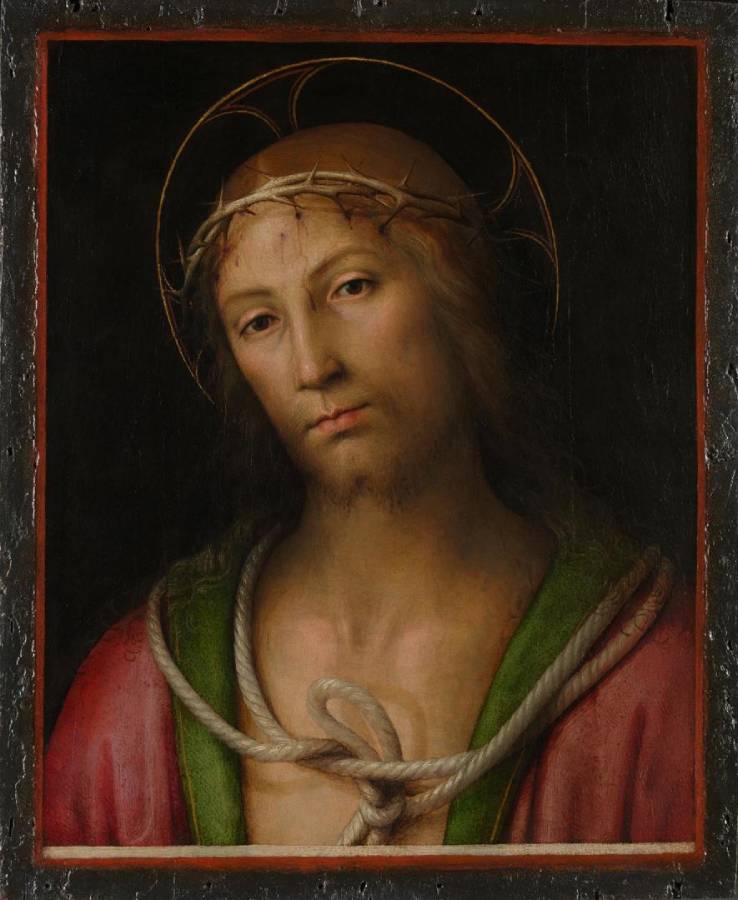Probably Perugino (c.1446-1523)
Cristo coronato di spine (Christ Crowned with Thorns)
c.1500–1505
Oil on wood, 40.3 x 32.4 cm
National Gallery, London
Christ is shown as a prisoner, a rope around his neck. He wears a crown of thorns and a purple robe, props made by his Roman captors to mock him: one of the charges against him was that he was claiming to be the ‘King of the Jews’. Dressed like this, he was brought before the citizens of Jerusalem by the Roman governor Pontius Pilate who, the Gospel writers record, said: ‘Behold the Man!’ (John 19: 5). These words in Latin are Ecce Homo, which became the title of this type of image.
The close-up view allows a direct encounter with Christ, who gazes directly at the viewer, as well as an inspection of his wounds – we can see blood dripping down his face as thorns pierce his skin. Meditating upon the Passion (Christ’s torture and execution) was thought to bring believers closer to God. Ecce Homo images, which originated in Northern Europe, were visual aids intended to promote empathy for Christ’s physical suffering. Christ is set against a dark background and his face is strongly illuminated – visual devices usually reserved for portraits (see, for example, Antonello da Messina’s Portrait of a Man). They intensify the focus on Christ’s expression and heighten both the drama and the intimacy of the interaction between Christ and the viewer.
The ambiguity of Christ’s expression – neither anguished, nor pleading – is both unnerving and challenging. He is depicted as courageous and resigned to his fate, the Crucifixion, which Christians believe saved humankind from sin. Images like this would have provoked a powerful mix of emotions in the Christian worshipper: awe, reverence, humility and gratitude. The panel’s small size makes it easily portable, and it might have been intended to travel with its owner so that they could meditate upon it wherever they were.
We can’t be certain that this picture is by Perugino, but it is painted in a manner that is very close to his style. Perugino was painting exclusively in oil after 1500, and here we see it used to blend the flesh tones with great subtlety, so that Christ’s skin appears to glow in the darkness. (NG)
